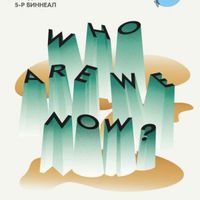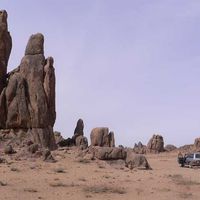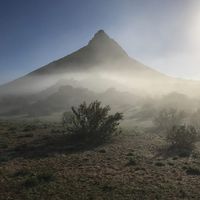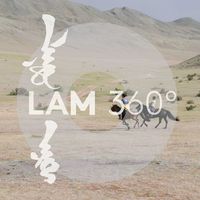Between art and environment: a Mongolian case study
This case study is part of an Asia-Europe Foundation commissioned research project entitled “Linking the Arts to Environment and Sustainable Development Issues”. The concept behind this research was based on the observation that carefully documented case studies can not only provide inspiration for networking and collaboration between Asia and Europe but also aid policy making and planning. The selected researchers investigated initiatives of the culture sector as well as civil society organisations working on environmental issues. The complete list of 20 case studies from a selection of countries in Asia will be available to download online from the beginning of 2012.The harsh landscapes of Mongolia inspire a group of artists who use art to make sense of their ever changing relationship with the natural world.
The philosophy underlying the 360° Land Art Biennale 2010, organised by the Mongolian National Modern Art Gallery in Ulaanbaatar, can perhaps be best summarised by a quote from Walter de Maria, “The land is not the setting for the work but a part of the work”.
Land Art Mongolia (LAM) was located in the unique context of Mongolia – a modern country marked by a landscape and terrain which by necessity has a proximity to nature, reflected in the relationship to the idea of space, openness and freedom. The primary motivation behind the project was to look at a landscape in transition, where it is simultaneously the guardian of centuries of natural history, and at the same time, the terrain of conflict over modern impulses and desires to tame it. As such the project invited 25 artists from diverse backgrounds and practices to reflect on the relationship between man and nature by situating their work within the hostile and yet fragile terrain of Mongolia. All the interventions were situated in Situ within the landscape in an attempt to reflect on the proximate relationship that Mongolians have with their barren landscape and the attendant social context and spiritual relations.
According to Marc Schmitz, German artist participating in LAM,
"the outputs of the project were transitory, mainly the personal experience and the artworks that did not last…the focus of LAM was less on works that sustain in a common understanding. Works were temporary vanishing with time, and specific implemented into the nature environment. It was about a new understanding of environment, face nature as alive, and discussions about art as well."
To supplement this transitory nature, LAM was also documented in a catalogue and showcased in a documentary exhibition of the works in the Mongolian National Modern Art Gallery. The project culminated with a 3 days symposium about art and politics in Ulaanbaatar where the audience interacted with politicians about government programmes concerning sustainability.
The importance of the project lies in the way in which it unified the correlational elements of experimentation, spatial site-specific creation, and environmentally sound practice. It also opened out ways to explore potential intersections of contemporary art with the pertinent discourse of environmental sustainability in the Mongolian context. LAM is an inspiring initiative that can be replicated in countries with a similar terrain, whether it is in a place like Ladakh in India or in the Kalahari Desert in Africa. The project reminds us of the possibility that people can live in harmony with hostile terrains, not through attempts at overcoming nature but by being one with it. If eco art projects seek to change the world by changing our relation to nature, this project serves as model for how to initiate a conversation between our aesthetic commitments and our commitments to fragile forms of life.
LAM continues to engage in this debate and in August 2011 they held a symposium on “Art and Politics – Contemporary art as spatial politics in light of emerging urbanism in Mongolia”. The symposium addressed questions of sustainability in a broader perspective of cultural change in Central Asia. The second Land Art Biennial will take place in August 2012.
This research was part of the Connect2Culture Art and Environment Programme and was commissioned in conjunction with the dossier: Arts. Environment. Sustainability. How can Culture Make a Difference? culture360.org will be publishing further extracts from the research online, so keep an eye out on the website.
Land Art Mongolia is currently calling for artists to participate in the 2012 Residency Programme.
All the images in this article are courtesy of the Mongolian National Art Gallery in Ulaanbaatar.
Researchers: Ekta Mittal and Monica James
Monica James is a media practitioner and researcher. She is currently a member of Maraa Media Collective , a media & arts collective based in Bangalore. Her preoccupation with the intersections between the discourses of culture and development prompted her interest in this project.
Ekta Mittal is a co-founder of Maraa Media Collective. She is also one of the founding members of Masrah, an eight year old theatre group. Mittal is passionate about travel, and has also worked as Research Manager for The Blue Yonder, a responsible tourism company where she identified communities to work with in Karnataka and Rajasthan.
Similar content
deadline
20 Dec 2013
posted on
28 Aug 2020
deadline
30 Jan 2018
deadline
30 Jan 2012
from - to
30 Jul 2018 - 25 Aug 2018
deadline
30 Nov 2020






